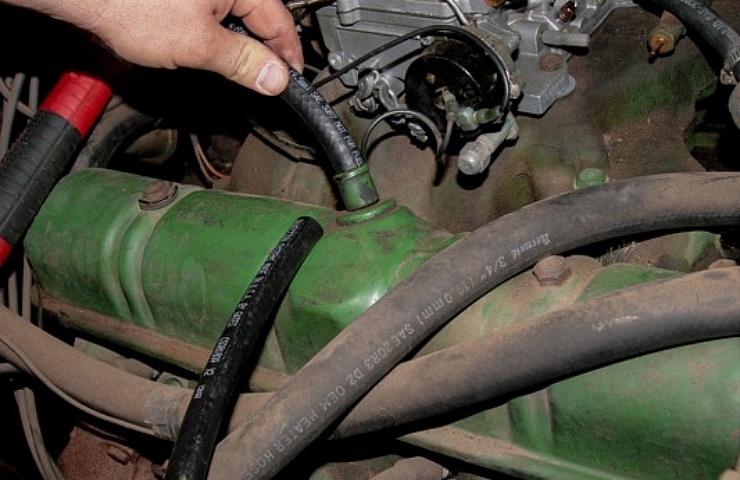Contents
The Problem Is Blow-By
An engine is essentially an air pump. As the pistons move up and down inside the cylinders, they draw air in, compress it, and then push it out. This means the cylinders must be sealed. A set of rings around each piston press against the cylinder walls to seal the combustion space from the rest of the crankcase and to clear oil from the sides of the cylinder.
There is a small gap in each ring for thermal expansion and installation. The gap means there is always some blow-by, which goes both ways: you can have oil blow-by when the rings allow oil into the chamber, and you can have blow-by when combustion gasses escape the chamber. The combustion gasses condense after they cool and mix into the oil, creating sludge.
The crankcase should be close to atmospheric pressure, but blow-by and other byproducts of internal combustion increase pressure inside the engine block. That puts pressure on the oiling system, which can push oil out of the engine through any available opening, even between the gaskets.
Read: An Overview of Car Engine Parts
The Solution Is the PCV Valve
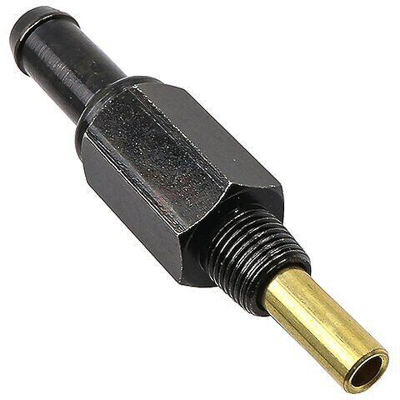
A PCV valve for a Kia Stinger V-6 engine
Each positive crankcase ventilation system has a valve and a breather or vent. Modern engines typically port the PCV into the intake behind the throttle body, and the valve itself may be in the valve cover or lifter valley (the area under the intake in V-type engines).
Before the 1990s, most engines had a simple valve in one valve cover and a breather cap on the other. The PCV connected to a vacuum port on the carburetor or in the air cleaner, and the breather was just a basic vented cap that allowed fresh air into the engine.
The valve is a small, screened, spring-loaded port that filters out oil mist and particles so only gasses can enter the combustion cylinder. Under idle and light throttle, the valve stays mostly closed due to the engine’s vacuum. At higher rpm, the vacuum lowers, and the valve opens fully to allow combustion gasses to be drawn into the engine and burned, reducing emissions. In the event of a backfire, the valve closes fully to prevent pressure from being sent into the crankcase.
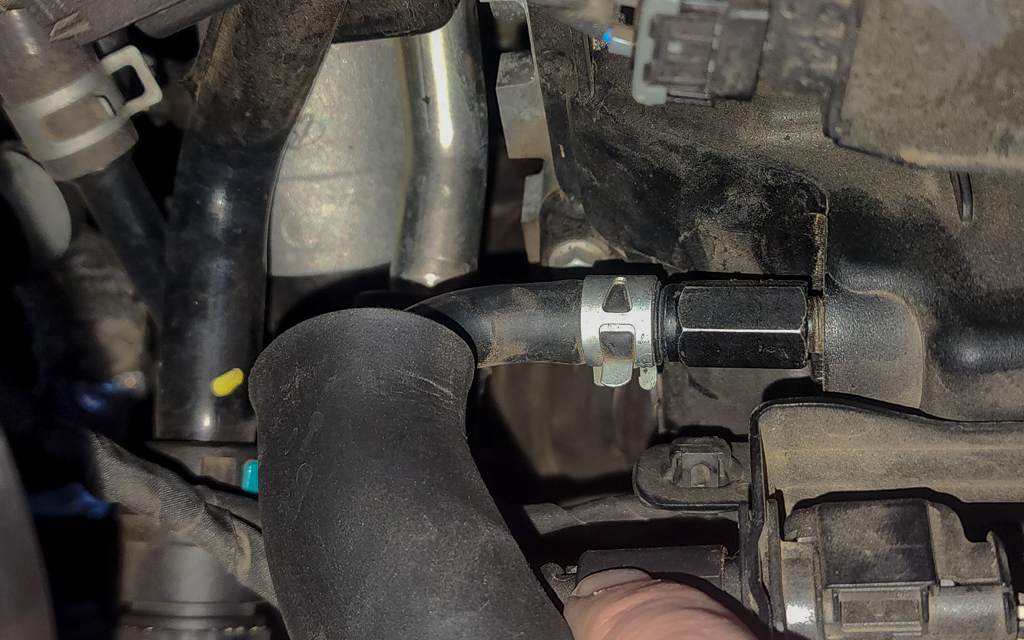
The Kia Stinger PCV valve, hose, and hose clamp installed on the engine valve cover (Photo: Jefferson Bryant)
How Do You Know Your PCV Is Good?
When the PCV valve fails, either there’s no venting for the crankcase or, if it sticks open, there’s a giant vacuum leak. Neither is good for your engine. An open valve can cause the engine to suck oil into the intake, creating massive problems.
A bad valve can produce symptoms like these:
- Increased oil consumption
- Whistling from the engine
- Pressure or excessive suction at the oil cap with the engine running
The valve is a simple vacuum-operated unit, so just taking hold of it and shaking it should produce a tinny rattle, like shaking a whistle. It is bad if it doesn’t rattle or makes a clunking or thudding sound.
You can test the valve of an older vehicle with the engine running by removing the valve from the valve cover and putting a finger over the port. At idle, you should feel a slight vacuum. If you blow through the valve at the top where it connects to the intake, no air should pass.
Read: A Guide to Cleaning a Throttle Body
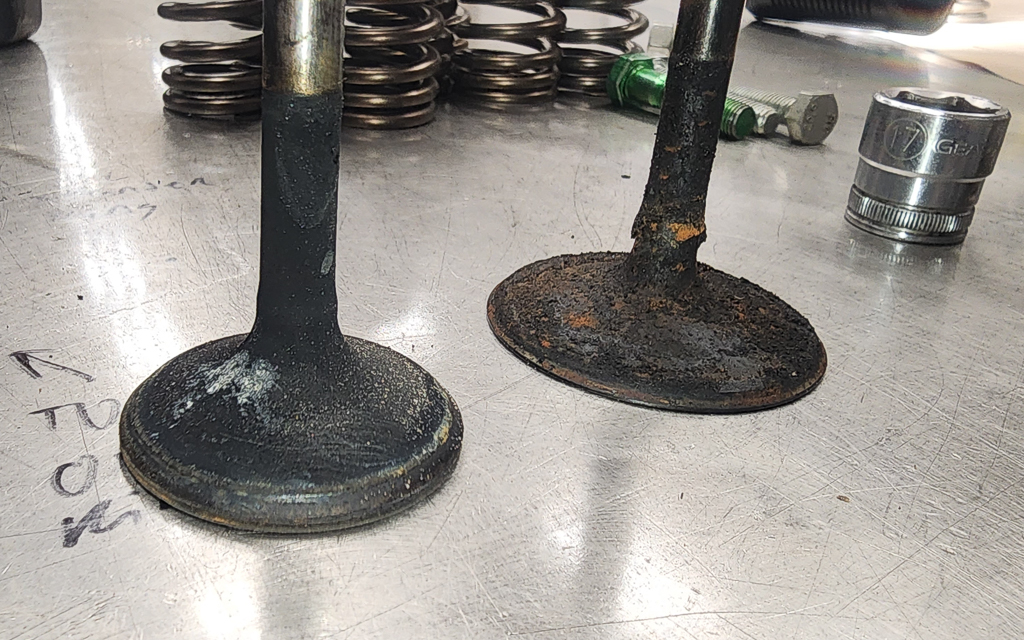
What happens when your PCV valve doesn’t work? You get carbon build up on the intake and exhaust valves.
How to Clean a PCV Valve
Everything that can get inside a PCV valve is oil based, so carburetor cleaner works well to clean a fouled PCV valve. There is no typical replacement schedule for a PCV valve, and most engines have the same one that was factory installed, even at 200,000 miles.
Here are the simple steps to follow to clean the valve:
- Remove the valve by either pulling it from the grommet, unthreading from a bung, or by removing a bolt. This varies by engine, but most use a push-in grommet in the valve cover.
- Soak the valve in carburetor cleaner for about 10 minutes.
- Rinse off with water.
- Reinstall the valve.
Read: Brake Cleaners Versus Carburetor Cleaners
How to Replace a PCV Valve
Depending on your engine, replacing the valve takes less than five minutes. In most cases, you simply remove the valve from the valve cover, remove it from the connecting hose, and pop the new one in.
Shop now for PCV valveWhile most are very simple to get to, some require you to remove other components to get to the valve. In some engines—like GM Gen V LT-series—the valve is in the valley cover, making it a bigger job. This usually involves removing a couple of small bolts to replace the valve. Check your owner’s manual or assembly guide to determine where and how to remove your vehicle’s PCV valve.
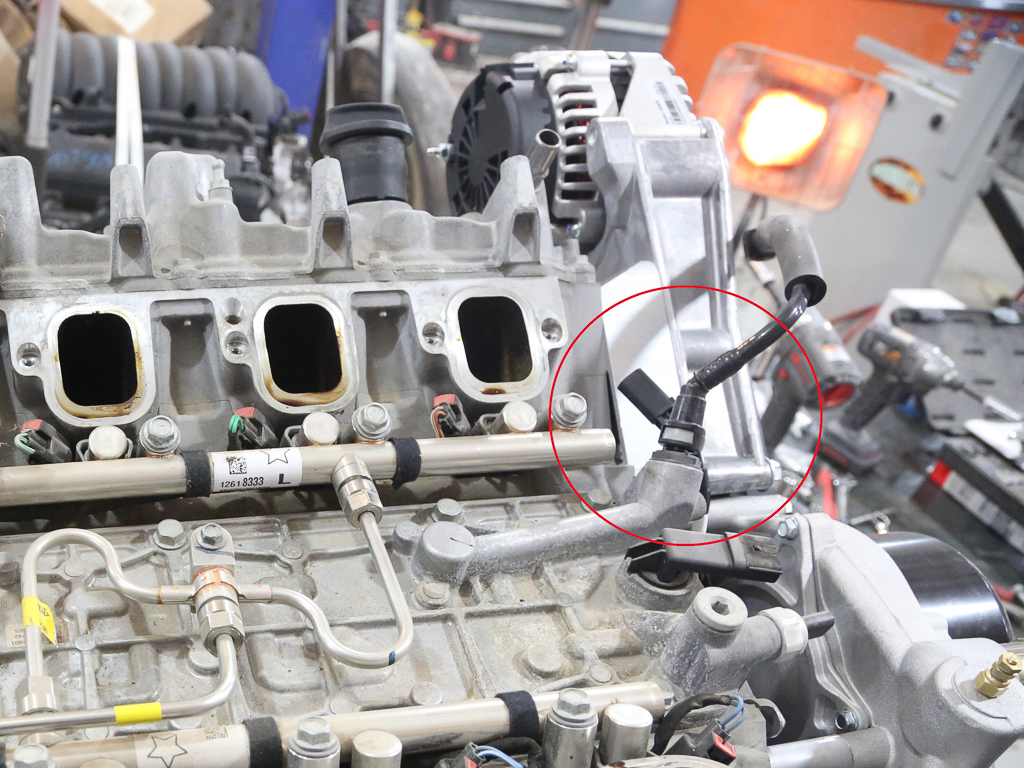
The PCV valve on this late model Gen V LT1 V-8 engine is located in the valley cover under the intake manifold.
Without a PCV valve, significant pressure will build inside the crankcase, pushing oil out through any opening and ruining your engine’s seal. Also, the combustion gasses and byproducts would mix in with the oil, eating away at the bearings and gaskets, leaving behind mounds of sludge and nastiness that drastically reduce the engine’s life.

